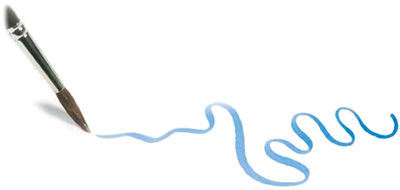
Origin of Artist's brushes.
The exact date is unknown for the first Artist's brushes made in France. In the past, Artists would learn to make their own brushes as well as their own colours. 2000 years before Christ, the Chinese had the idea to insert natural hairs into bamboo, to write their ideograms. In 1730, metal ferrules were available. It was not until shortly before 1789 that the first workshops, then factories started to appear. French manufacturing had at the beginning a very large monopoly. Then, Germans from Nürnberg came to learn the French technology. This is why the French from Artists' brushes is still the most used around the world. The founding for the present SAUER Company goes back to 1793 in Paris. Today it is the oldest European Manufacture of Fine Brushes.
How brushes are made.
Raphaël brushes are made by highly skilled "pincelières". They are given long and rigorous training. The products are controlled at each stage of the manufacturing process. Handles and ferrules are chosen, to ensure an attractive presentation as well as solidity. Tradition and know-how among our brushmakers has been passed over many generations and the extreme care taken to "dress" Fine hairs before the manufacturing stages result in supreme quality of finished product, thus ensuring continued pleasure of use which all amateur and professional Artists have come to recognise as synonymous with Raphaël brushes.
The structure of the paintbrush and its manufacture.
The Raw Materials used must be selected with great care. Three parts :
- The filling : the most important, because it is in contact with the support. Fine hairs, bristles and conical or cylindrical fibres.
- The ferrule : Metal, plastic or natural quill, ties made out of metal wire or natural string. Conical or cylindrical.
- The handle : Soft wood.
More than thirty people are involved in the manufacture of a finebrush... Its tuft is never cut but instead shaped entirely by hand with regard to the flag (tip of fibre). Only the root is cut to allow the ferrule to be fitted.
Fibers.
Three categories, in which the shape, diameter and flag vary.
Fine hairs.
Hydrophilic and oleophilic (each hair can absorb and retain water or oil). Conical and with a unique "flag". They also have a "belly", which begins in the middle of the length of the fiber and then tapers out. For fine and soft techniques.
- Extra-Fine : Red Sable (Kolinsky or Visel), Squirrel (Blue, Kazan or Golden).
- Fine : Imitation Sable, Ox ear, Polecat, Pony, Goat.
Hog's bristle.
Hydrophilic and oleophilic. Straight or "Interlocked" (naturally curved) and with multiple flags : used for non aggressive paste techniques, for example Oil paints or Gouache.
- Half-white.
- Fine-white.
- Extra fine-white.
These designations describe the colour and the quality of the hog's bristle.
Synthetic fibers.
Hydrophobic and oleophobic (the fiber does not absorb water or oil). Up to 7 diameters used ! For "aggressive" paints, such as acrylics.
- Straight.
- "Interlocked".
Ferrules and handles.
An assembly forming a double cone.
Ferrules : conical or cylindrical, used in both directions. They may be :
- natural : bird quills from various sources, depending on the desired diameter.
- metal : rolled or welded tinplate, natural varnished copper, nickel coated or gilded brass, extruded.
- plastic : imitation of natural quill, usually made out of polyamide.
Handles : birch, ash or beech sanded down from strips of wood, and finished with up to 4 coats of lacquer or varnish for a pleasant feel.
Preparation of the bristles.
Fine or Extra-fine hairs, Synthetic Fibres or Bristles are all prepared in bundles in order to obtain a single, uniform "tirure" that can be assembled into tufts, domed or "square", round or flattened in the ferrule. The word "tirure" in French designates the length used for manufacturing the brush.
In order to obtain a uniform tuft, the fibre from a single tirure is ltaped into a "mould" or cup with two aims : to place the fibre (Flag and Root) in the same direction, and eliminate or reclassify parasite fibres: bristles that are too short, the wrong way round or "head to tail", or too long.
This vital preparation guarantees the cohesion of the paintbrush tuft when in use. Even when correctly assembled, brushes with poorly prepared hairs or fibres may lead to unpleasant surprises: a hidden defect in certain manufactured brushes, then acts as a hindrance to the creativity of the artist.
Copyright © Raphaël 2012
